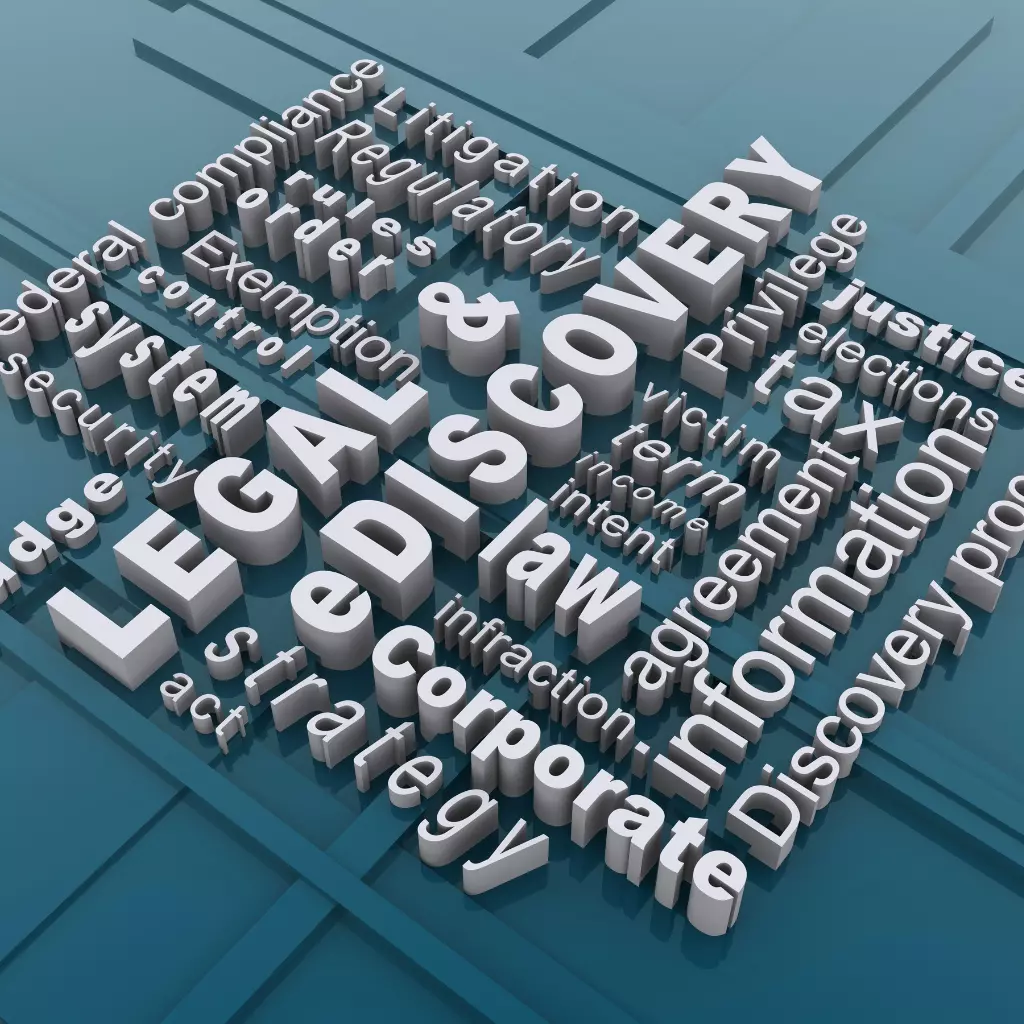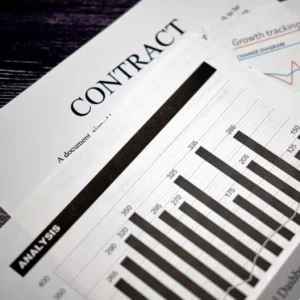
AI-Driven E-Discovery Platforms
Enhanced Efficiency and Precision
Often seen as a bastion of traditional practices, the legal realm is undergoing a seismic shift. At the heart of this transformation lie AI-Driven E-Discovery Platforms. These groundbreaking tools, bolstered by advanced natural language processing and predictive coding, promise to reshape how legal professionals approach evidence discovery.
But it’s not just about the technology; it’s about the profound impact on efficiency, precision, and the evolution of legal standards. As digital data burgeons, the importance of AI-enhanced legal evidence classification and AI’s role in digital forensic investigations grows ever more crucial.
This article unravels the intricacies of these platforms, offering insights into their current capabilities and potential for the future. Join us in this exploration of the next frontier in legal technology.
Table of Contents
Streamlining Discovery with AI Platforms
In today’s dynamic legal ecosystem, AI-driven e-discovery platforms have emerged as a revolutionary tool, facilitating faster and more efficient case preparations. These platforms harness the prowess of predictive coding in legal discovery, allowing legal professionals to pinpoint relevant data quickly. Gone are the days of sifting through terabytes of irrelevant documents; now, AI for efficient legal data retrieval has become the new norm.
Natural language processing also plays a crucial role in facilitating this transformation in e-discovery. Are you tired of sifting through endless piles of digital documents, trying to find the necessary information? Well, with this fantastic technology, those days are over!
Now, you’ll have access to vast repositories of digital documents that are easily searchable, allowing you to locate the exact information you need with lightning speed. Say goodbye to unnecessary delays and hello to a more efficient way of working. Moreover, AI-enhanced legal evidence classification provides that vital information is systematically organized and easily retrievable.
Machine learning for e-discovery accuracy further elevates this streamlining process. The system consistently refines its search by learning from past discoveries, making each subsequent case preparation more precise. Notably, AI-driven legal data redaction safeguards sensitive data, ensuring only pertinent, non-confidential information surfaces during searches.
When it comes to meeting strict standards in the legal sector, the crucial role played by AI in e-discovery compliance cannot be overstated. But as these platforms evolve and redefine digital legal practices, one must wonder: How will these technologies shape the future of AI in digital evidence management?
Enhancing Coding and Tagging Efficiency
The traditional method of manually coding and tagging legal documents has always been labour-intensive. Enter AI-driven e-discovery platforms, revolutionizing this age-old practice. Predictive coding in legal discovery is one of their most influential features. Instead of laboriously tagging each document, these platforms can anticipate what a legal professional might seek, significantly reducing the hours spent on manual document review.
The beauty of these platforms doesn’t stop there. Natural language processing in e-discovery is another game-changer. Complex legal terminologies are simplified with the AI’s ability to understand context and semantics, ensuring no relevant documents are missed due to subtle linguistic nuances.
As AI-enhanced legal evidence classification integrates with these platforms, it further streamlines the process. This intelligent classification means evidence can be quickly tagged and sorted based on relevance and importance. Coupled with machine learning for e-discovery accuracy, each search and tagging action becomes more refined over time, learning from past interactions to predict future needs.
Yet, amidst these advancements, one can’t help but wonder: With such a rapid evolution in AI’s role in e-discovery compliance, how will legal professionals adapt and integrate these tools to stay ahead in their practice?
Retrieving Legal Data Seamlessly
In an age where digital information burgeons at an unprecedented rate, the ease of retrieving precise legal data can make or break a case. Here’s where AI-driven e-discovery platforms shine the brightest. With the assistance of AI for efficient legal data retrieval, lawyers can navigate vast data lakes to find the proverbial needle in the haystack in mere seconds.
The magic behind this seamless retrieval is credited mainly to natural language processing in e-discovery. By understanding the context and intricacies of legal jargon, these systems ensure that every critical piece of data remains hidden due to linguistic disparities or overlooked semantics. In tandem, predictive coding in legal discovery offers suggestions, leading professionals to potential pertinent information even before they realize its significance.
The continual growth and evolution of machine learning for e-discovery accuracy implies that these platforms get smarter with every search. They adapt, refine, and enhance their algorithms based on user interactions, guaranteeing more relevant results with each query. Moreover, with AI-enhanced legal evidence classification, relevant evidence is systematically organized, ensuring nothing is misplaced.
But, as seamless as this process seems, it begs the question: As data grows exponentially, how will AI-driven e-discovery platforms evolve to handle even more complex legal landscapes?
Comprehending and Searching Digital Documents
The digital age has seen an explosion of documents, with countless formats and structures, making their comprehension and searchability increasingly challenging. At the forefront of addressing these complexities are the AI-driven e-discovery platforms. These platforms harness natural language processing in e-discovery, enabling them to understand, interpret, and search through documents in ways traditional methods could only dream of.
Consider the challenges of legal documents filled with terminologies, references, and context. With the integration of predictive coding in legal discovery, these platforms can preemptively identify patterns and trends, guiding legal professionals to the most pertinent documents in their searches. AI further enhances this efficiency for efficient legal data retrieval, which ensures rapid access to the needed data, no matter how deep it’s buried within digital repositories.
Further reinforcing this capability is machine learning for e-discovery accuracy. The system learns and evolves as it encounters various document types and user search behaviours, ensuring even more precise results in subsequent searches. This continuous evolution promises a future where even the most complex and vast documents can be easily comprehended and searched.
But, with such advancements on the horizon, one must ponder: How will these capabilities transform the expectations and standards of AI’s role in e-discovery compliance in the coming years?
Classifying Evidence Systematically
In legal proceedings, evidence is the bedrock of any case. However, the sheer volume of evidence in diverse formats can pose significant challenges. AI-driven e-discovery platforms have risen to meet this challenge, introducing a level of organization that’s reshaping the legal realm.
At the heart of this transformation lies AI-enhanced legal evidence classification. This feature empowers these platforms to recognize, sort, and categorize different pieces of evidence based on their significance, type, and relevance. Doing so removes the traditional manual burdens and potential inconsistencies plaguing legal professionals for decades.
Another commendable capability comes from integrating natural language processing in e-discovery. By understanding context, nuances, and terminologies, this technology ensures that evidence is categorized even when laden with complex legal jargon. This becomes crucial when coupled with predictive coding in legal discovery, which can anticipate the relevance of a document based on past interactions and broader legal contexts.
With the amalgamation of machine learning for e-discovery accuracy, these platforms continuously refine their classification algorithms. They learn from each case, evolving to address the ever-changing demands of the legal industry.
Yet, as systematic as this classification process has become, one wonders: In what innovative ways will the future of AI in digital evidence management further revolutionize evidence classification?
Diving Deep into Digital Forensic Probes
Digital forensics, the art of extracting and interpreting electronic data, has become indispensable in legal investigations. With the sheer growth of digital data, traditional forensic methods often need to improve. Enter the AI-driven e-discovery platforms, offering a fresh approach to digging deep into electronic evidence.
Leveraging AI in digital forensic investigations means these platforms can sift through vast data at unimagined speeds. They not only locate but also comprehend the intricate nuances of digital footprints. This is made possible, in part, due to natural language processing in e-discovery, allowing the software to understand context, semantics, and patterns within the digital realm.
These platforms also integrate predictive coding in legal discovery, which predicts the potential relevance of data points, guiding investigators to potential evidentiary gold mines. Meanwhile, machine learning for e-discovery accuracy ensures the system becomes more adept with every probe, refining its search algorithms based on past patterns and findings.
Yet, as these systems go more profound and more precisely into digital evidence, a burning question arises: How will AI’s role in e-discovery compliance evolve to ensure that such deep probes respect privacy norms and regulatory boundaries?
Ensuring Utmost Accuracy in Discovery Processes
Accuracy in the discovery process is paramount. A slight oversight or misinterpretation can have grave implications in legal proceedings. Traditional methods, though reliable, often need to grapple with the vastness and complexity of digital data. However, with AI-driven e-discovery platforms, there’s a transformative shift toward precision like never before.
Central to this transformation is the role of machine learning for e-discovery accuracy. As these platforms navigate numerous data sets, they learn, adapt, and refine their search parameters. Each interaction hones their ability to pinpoint relevant data with staggering accuracy, minimizing the chance for oversight.
Have you ever wondered how e-discovery platforms can accurately identify relevant information from a sea of data? The secret lies in the incorporation of natural language processing. These platforms can extract meaning from the most enigmatic data points by analyzing the nuances of language and context within documents.
So, next time you’re sifting through mountains of information, remember the power of natural language processing in making sense of it all. And, when paired with predictive coding in legal discovery, the system not only retrieves but also anticipates potential relevant data based on evolving case narratives.
The synergy of these technologies within AI-driven e-discovery platforms promises a future where discovery errors become a relic of the past. But, as we march toward this future, one has to wonder: How will the legal industry recalibrate its standards in the face of such technological precision?
Redacting Sensitive Information Automatically
In a world increasingly concerned with data privacy, redacting sensitive information is no longer just a best practice—it’s a mandate. Traditional manual redaction is tedious and prone to human error. Thankfully, AI-driven e-discovery platforms are revolutionizing this space, ensuring utmost confidentiality.
These platforms harness AI-driven legal data redaction techniques, enabling them to detect and obscure sensitive information across voluminous documents automatically. Imagine a tool that helps you find known patterns and understand the context of your documents, ensuring that no personal or confidential data goes unnoticed. That’s precisely what natural language processing brings to e-discovery. With this technology, you can trust that your data is safe and secure.
Another layer of efficiency stems from machine learning for e-discovery accuracy. As the system redacts documents, it continuously learns, improving its sensitivity towards diverse data points that might require redaction. Imagine having the power to detect sensitive information in legal discovery before anyone else does. With the help of predictive coding, these unique platforms can do just that. It’s like having a superpower that can save time and effort while ensuring accuracy and fairness.
Yet, with the automation of such a critical task, there are inherent challenges and responsibilities. As AI’s role in e-discovery compliance expands, ensuring these platforms maintain the highest standards of redaction without over-redacting becomes crucial. This poses a thought-provoking question: How will the balance between data accessibility and protection evolve in the future e-discovery landscape?
Meeting E-Discovery Regulatory Standards
Regulatory standards in e-discovery set the gold standard for how legal entities should handle, analyze, and present electronic data. With evolving data landscapes and increasing complexities, meeting these standards can take time and effort. Enter the AI-driven e-discovery platforms, ushering in a new era of compliance.
Leveraging AI’s role in e-discovery compliance, these platforms are adept at ensuring that every piece of data and every process abides by stringent regulations. Machine learning for e-discovery accuracy plays a pivotal role as the system refines its operations based on feedback, ensuring better adherence to compliance requirements with every cycle.
Predictive coding in legal discovery further elevates the platform’s ability to align with regulatory standards. By predicting data relevance and automating categorization, these platforms reduce the risk of non-compliance arising from human error. Additionally, integrating natural language processing in e-discovery guarantees that even the most intricate regulatory requirements, often buried in dense legal jargon, are understood and adhered to.
But as these platforms become the new norm, there’s a broader implication to ponder. With AI shaping the future of compliance, how will regulatory standards evolve to address the unique challenges and possibilities that AI introduces to the e-discovery process?
Preparing for the Next Era of Digital Evidence Handling
The digital revolution has left an indelible mark on the legal landscape, necessitating an evolution in evidence handling. AI-driven e-discovery platforms stand at the forefront of this change, but what does the future hold?
The capabilities of natural language processing in e-discovery are ever-expanding. Soon, platforms might not just comprehend text but could potentially understand nuances of emotions or even detect deceptive language patterns. As machine learning for e-discovery accuracy advances, we can anticipate systems that self-optimize with minimal human intervention, navigating complex legal terrains with unmatched precision.
AI plays a crucial role in digital forensics amidst rising cybercrime. The future might witness AI platforms working with digital forensic experts, identifying traces the human eye might otherwise miss. Furthermore, as predictive coding in legal discovery becomes sophisticated, AI may anticipate legal moves, strategy shifts, or potential litigation areas based on data trends.
As we stand at this transformative juncture, a pivotal thought emerges. With AI reshaping digital evidence handling’s very fabric, are our legal systems and education equipped and agile enough to keep pace with these rapid technological strides?
Concluding Thoughts: AI's Profound Impact on the Legal Sphere
In the legalities and complex data handling world, AI-driven e-discovery platforms have emerged as game-changers. These platforms, with their capabilities powered by natural language processing in e-discovery, are streamlining operations and offering unparalleled precision.
Answering the pivotal question of compliance, it’s evident that AI’s role in e-discovery compliance is reshaping our understanding of regulatory standards. These platforms navigate the dense maze of legal regulations, ensuring data relevance through predictive coding in legal discovery. As a result, the risk of non-compliance diminishes significantly as human errors are minimized.
Furthermore, AI-enhanced legal evidence classification ensures evidence is stored and systematically organized, boosting efficiency and accessibility. This systematic approach dovetails seamlessly with machine learning for e-discovery accuracy, where systems self-optimize based on feedback, bringing the industry closer to impeccable data handling.
When we dive into cybercrimes, AI in digital forensic investigations becomes indispensable. The collaboration of AI with human experts in forensics will certainly elevate digital evidence retrieval to unparalleled heights.
Yet, the burning question remains: As AI-driven e-discovery platforms continue their ascendancy, transforming digital evidence management’s future, will our legal institutions and education evolve at a commensurate pace? They must do so, for only then can we truly harness the immense potential AI brings to the legal table, reshaping the landscape through enhanced efficiency and precision.
Related Articles
- AI in Pro Bono Case Selection: Maximizing Impact
- AI in Alternative Dispute Resolutions: The New Mediator
- AI in Courtroom Support: Revolutionizing Evidence Compilation
- AI-Driven IP Management: From Patents to Trademarks
- AI-Driven Document Categorization: Legal Filing Transformed
- AI in Compliance Monitoring: Legal Standards and Predictive Oversight
- AI-Driven Legal Chatbots: Future of Attorney-Client Interactions
- AI-Driven E-Discovery Platforms: Enhanced Efficiency and Precision
- AI-driven Legal Analytics: Transforming Decision-making and Litigation Strategies
- AI-Driven Legal Research: How Technology is Reshaping the Future of Law
- AI for Contract Analysis: Streamlining Processes and Predicting Success
- Other Articles on AI Usage in Legal
- Other Articles on AI usage in different industries
























